28 Amazingly Colorful Animals
Nathan Johnson
Published
08/07/2014
in
Animals & Nature
Spectacular displays of color courtesy of mother nature.
- List View
- Player View
- Grid View
Advertisement
-
1.
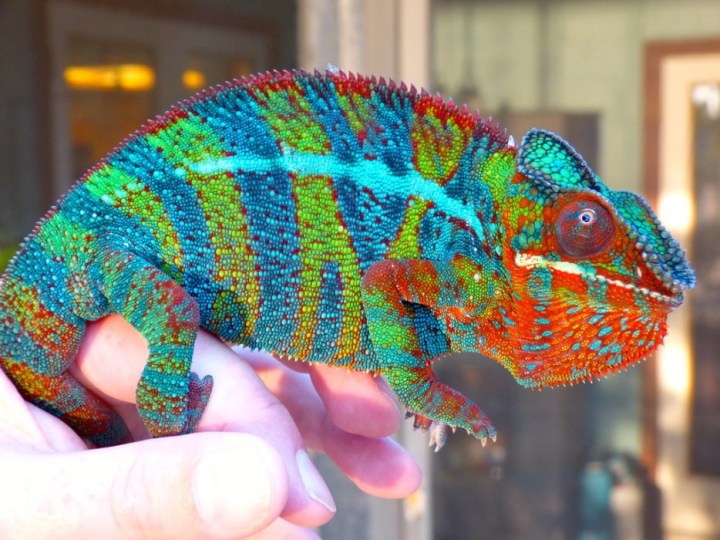 Chameleon: Not all chameleons can change color, and most of the ones that can dont use it for camouflage.
Chameleon: Not all chameleons can change color, and most of the ones that can dont use it for camouflage. -
2.
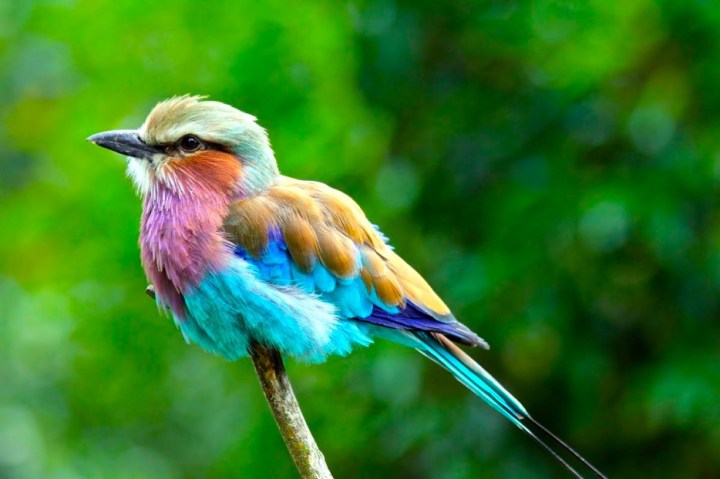 Lilac-Breasted Roller: They are the national bird of both Kenya and Botswana and are often considered one of the most beautiful birds in the world because of their pastel feathers.
Lilac-Breasted Roller: They are the national bird of both Kenya and Botswana and are often considered one of the most beautiful birds in the world because of their pastel feathers. -
3.
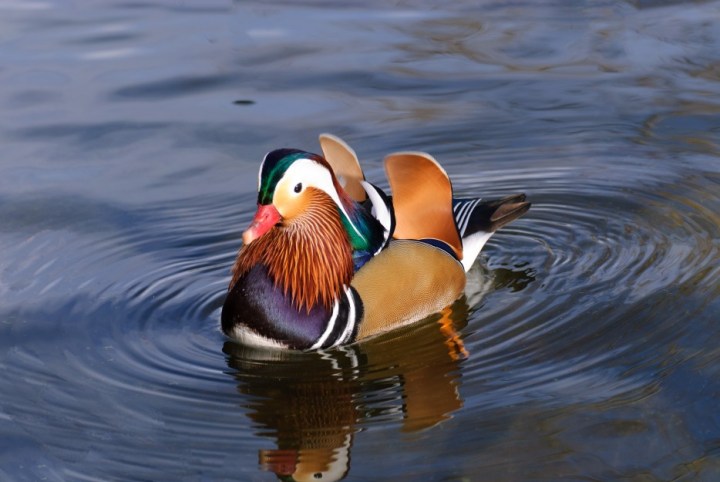 Mandarin Duck: The mandarin duck is a popular feng shui cure for love in China and Japan because these ducks mate for life.
Mandarin Duck: The mandarin duck is a popular feng shui cure for love in China and Japan because these ducks mate for life. -
4.
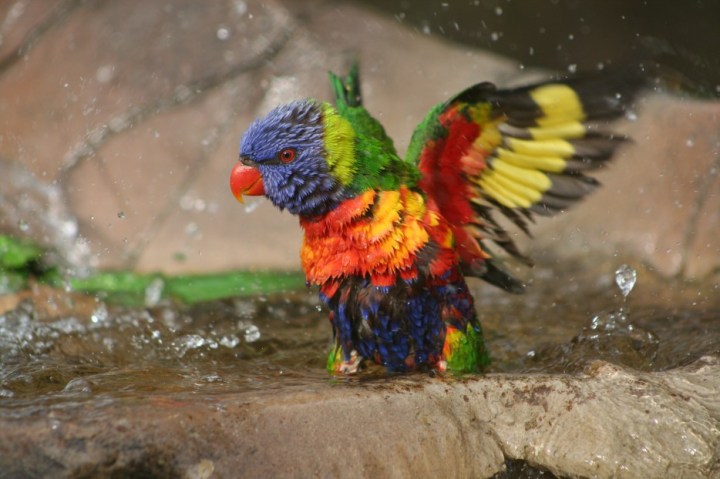 Rainbow Lorikeet: The coloring makes these birds unmistakable. They may be Australian natives, but are commonly kept as pets around the world.
Rainbow Lorikeet: The coloring makes these birds unmistakable. They may be Australian natives, but are commonly kept as pets around the world. -
5.
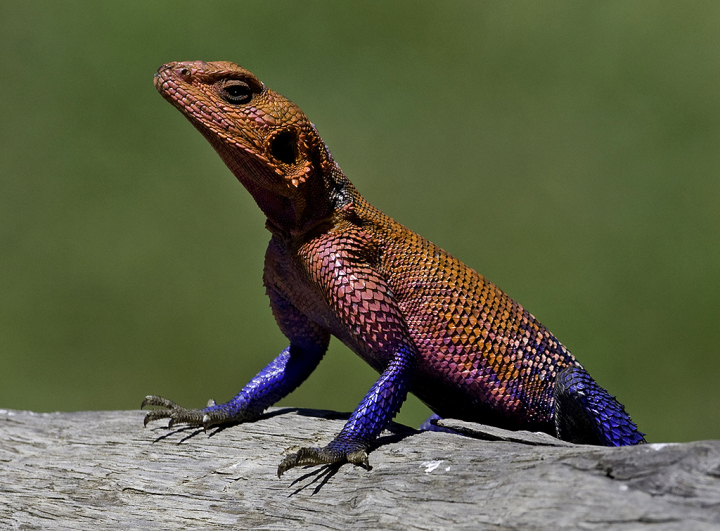 Agama Lizard: These lizards live in small groups and the dominant male gets to sunbathe in the highest spot looking over the others.
Agama Lizard: These lizards live in small groups and the dominant male gets to sunbathe in the highest spot looking over the others. -
6.
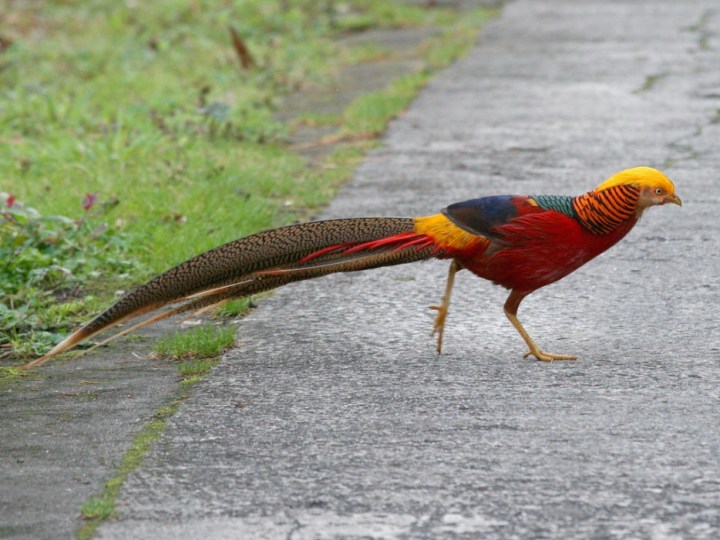 Golden Pheasant: An adult male can be up to 40 inches long, although two-thirds of that is due to the long tail.
Golden Pheasant: An adult male can be up to 40 inches long, although two-thirds of that is due to the long tail. -
7.
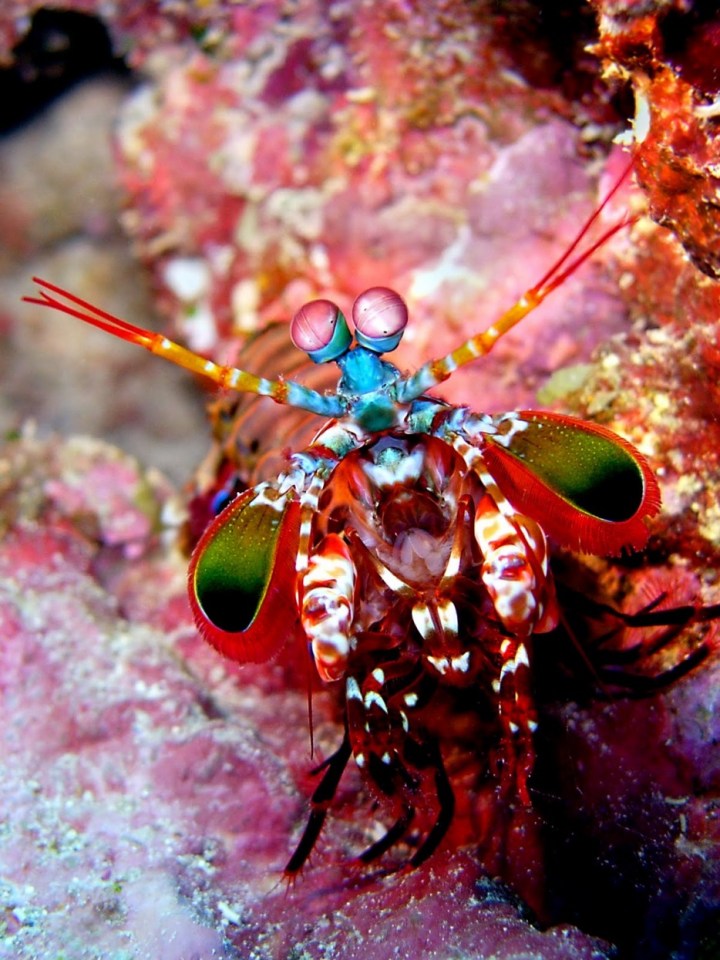 Peacock Mantis Shrimp: The mantis shrimp has the fastest punch in the animal kingdom. Its appendages can reach the same speed as a bullet and can cut a human finger down to the bone.
Peacock Mantis Shrimp: The mantis shrimp has the fastest punch in the animal kingdom. Its appendages can reach the same speed as a bullet and can cut a human finger down to the bone. -
8.
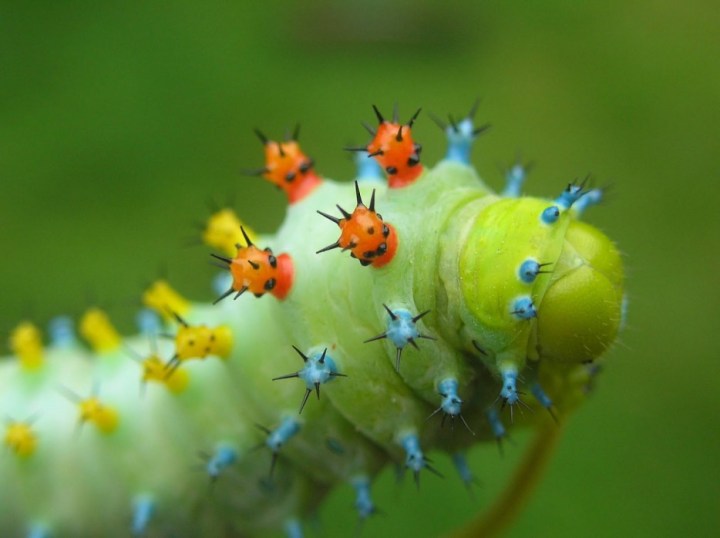 Cecropia Moth Caterpillar: This caterpillar will turn into the largest moth in North America.
Cecropia Moth Caterpillar: This caterpillar will turn into the largest moth in North America. -
9.
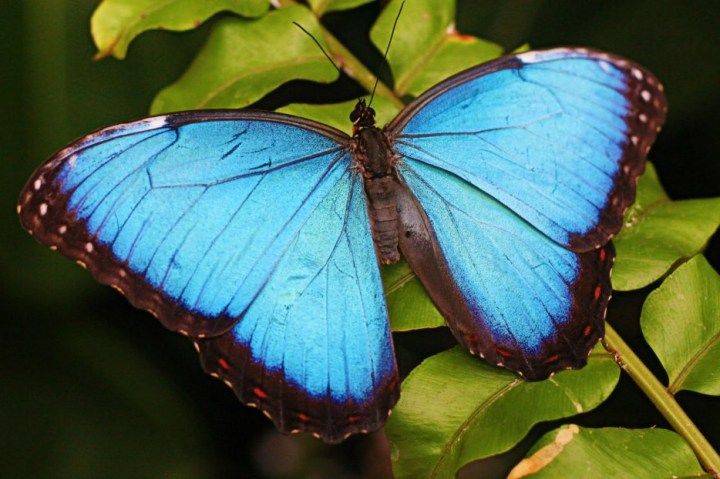 Blue Morpho: With a wingspan up to 8 inches, the blue morpho is one of the largest butterflies. The underside of its wings are a dull brown color to provide camouflage when closed.
Blue Morpho: With a wingspan up to 8 inches, the blue morpho is one of the largest butterflies. The underside of its wings are a dull brown color to provide camouflage when closed. -
10.
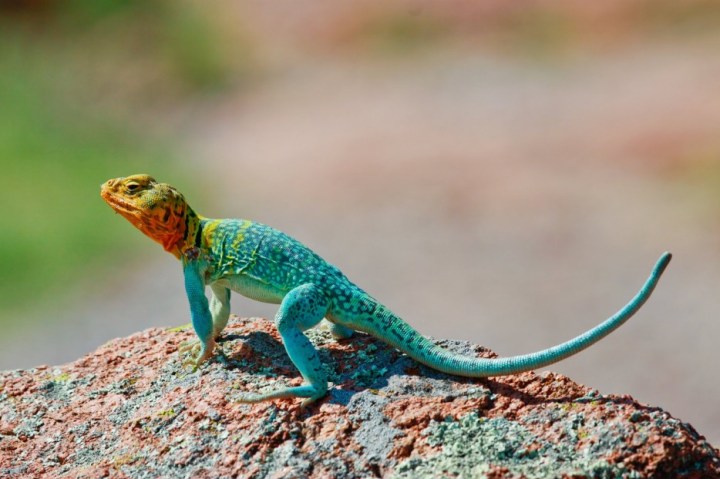 Collared Lizard: They are one of a few lizard species that can run using only their hind legs.
Collared Lizard: They are one of a few lizard species that can run using only their hind legs. -
11.
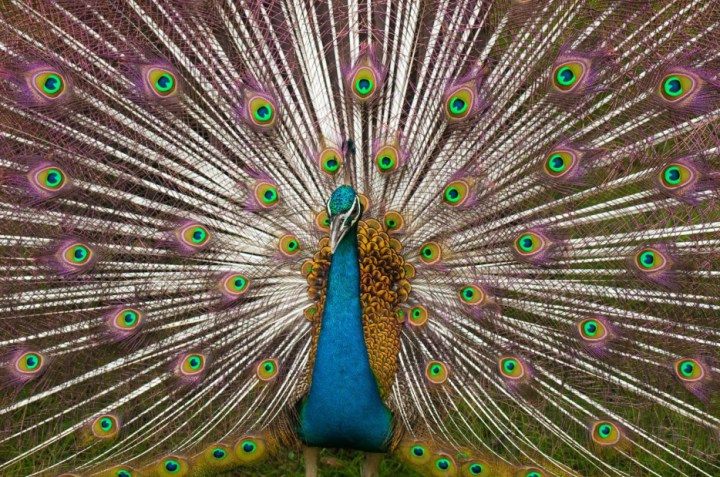 Indian Peacock: In India it is thought that when a peacock spreads its feathers, rain is near.
Indian Peacock: In India it is thought that when a peacock spreads its feathers, rain is near. -
12.
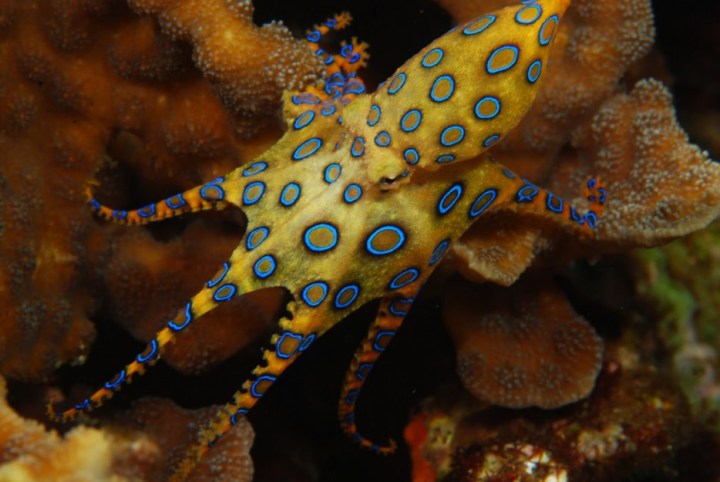 Blue-Ringed Octopus: This little octopus may be only 8 inches long, but it is very deadly. Its toxic bite can paralyze and kill a human in minutes.
Blue-Ringed Octopus: This little octopus may be only 8 inches long, but it is very deadly. Its toxic bite can paralyze and kill a human in minutes. -
13.
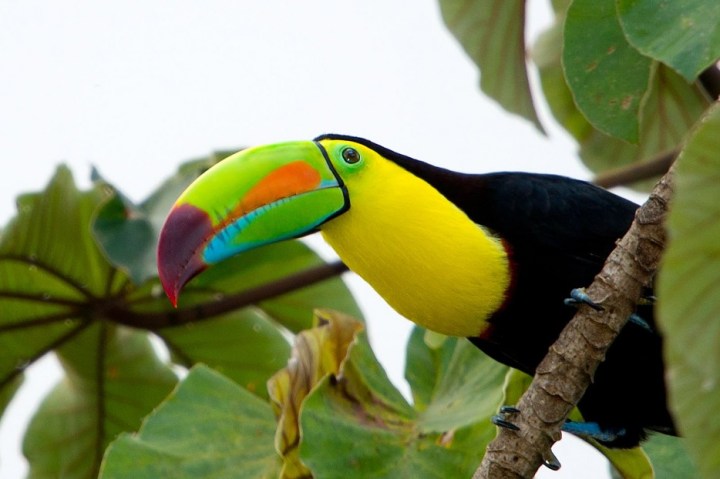 Keel-Billed Toucan: The long, colorful bill is around one-third of the total length of these toucans and its bright colors are why they are also known as rainbow-billed toucans.
Keel-Billed Toucan: The long, colorful bill is around one-third of the total length of these toucans and its bright colors are why they are also known as rainbow-billed toucans. -
14.
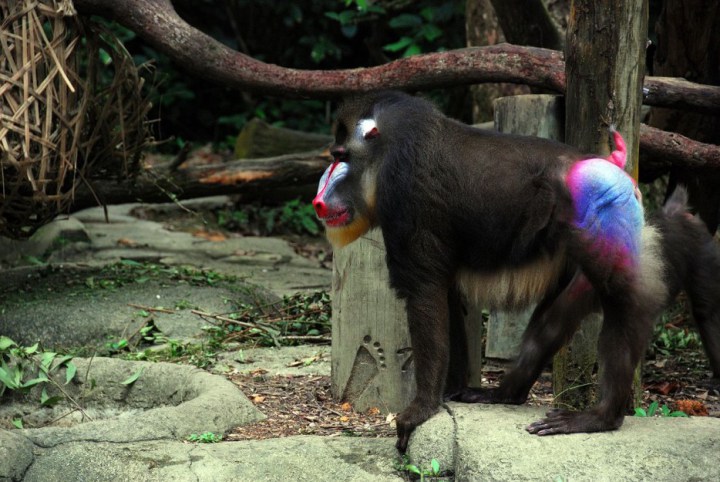 Mandrill: The bright colors on the faces of the males are what attracts the females. The brightly colored butts help them follow one another through thick forests.
Mandrill: The bright colors on the faces of the males are what attracts the females. The brightly colored butts help them follow one another through thick forests. -
15.
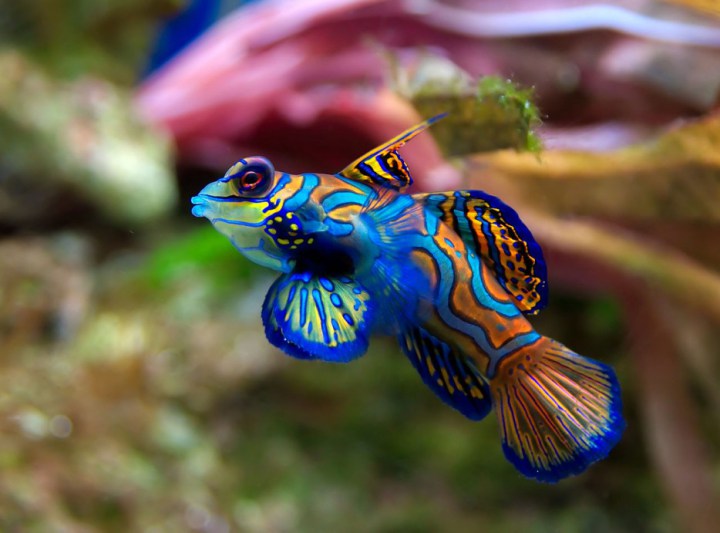 Mandarin Fish: The mandarin fish is a shy reef fish and it got its name because their extreme coloration resembles the robes of an Imperial Chinese officer mandarin.
Mandarin Fish: The mandarin fish is a shy reef fish and it got its name because their extreme coloration resembles the robes of an Imperial Chinese officer mandarin. -
16.
 Flamingo: Baby flamingos are born with gray feathers and gain the pink coloring as they get older due to a diet high in beta carotene.
Flamingo: Baby flamingos are born with gray feathers and gain the pink coloring as they get older due to a diet high in beta carotene. -
17.
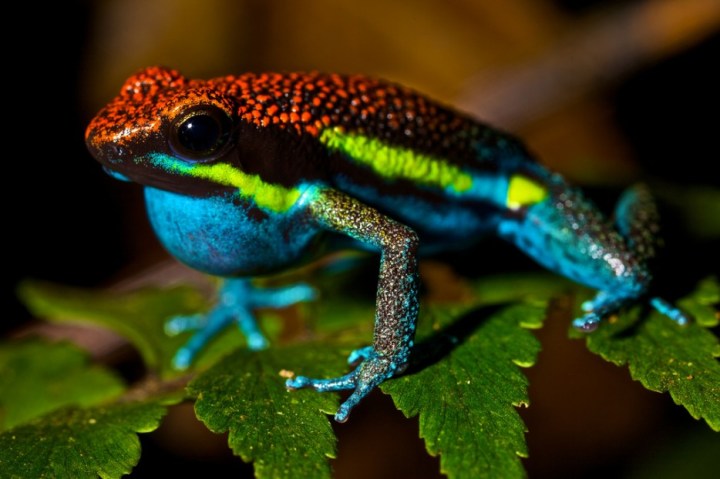 Poison Dart Frog: There are more than 100 different poison dart frog species all with bright colors to warn predators of their toxicity.
Poison Dart Frog: There are more than 100 different poison dart frog species all with bright colors to warn predators of their toxicity. -
18.
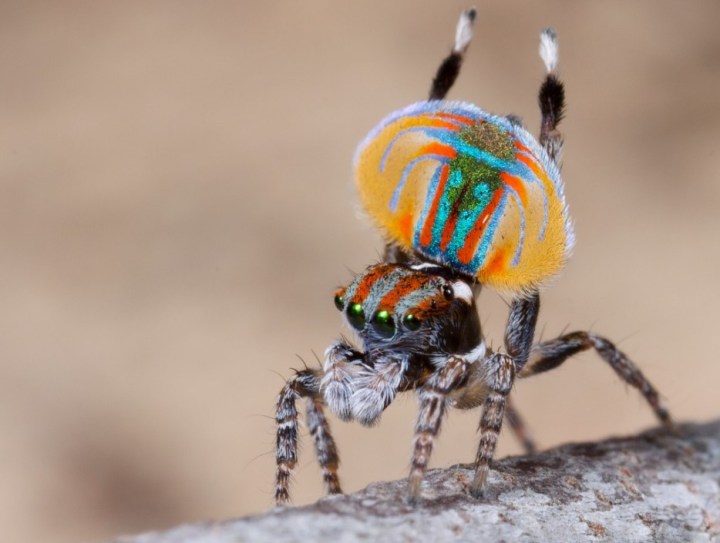 Peacock Spider: These little jumping spiders are so tiny that they can fit on your fingernail. The males use their bright coloring to attract females.
Peacock Spider: These little jumping spiders are so tiny that they can fit on your fingernail. The males use their bright coloring to attract females. -
19.
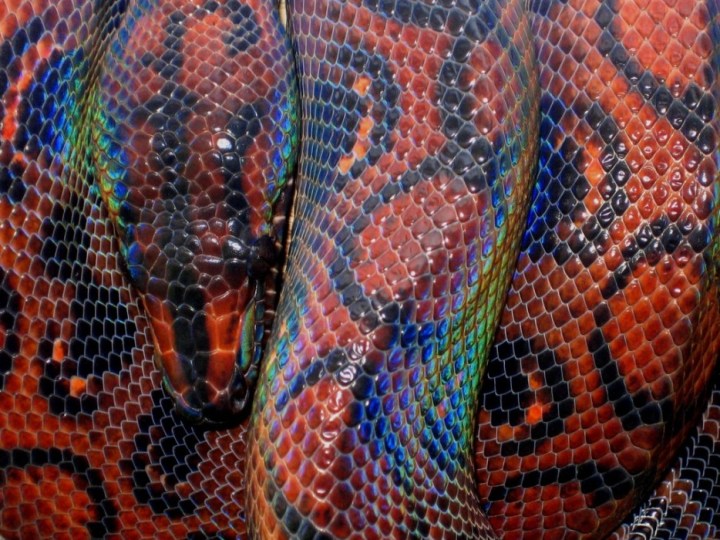 Rainbow Boa: These snakes have microscopic ridges on their scales which act like prisms to refract light into rainbows.
Rainbow Boa: These snakes have microscopic ridges on their scales which act like prisms to refract light into rainbows. -
20.
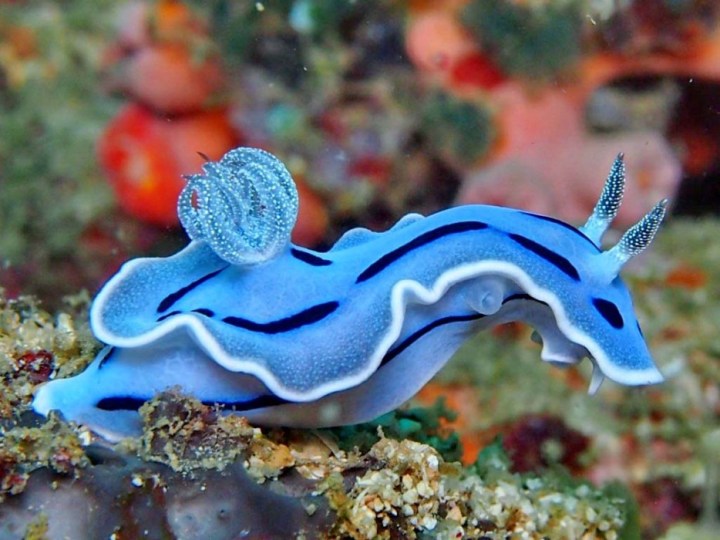 Loch's Chromodoris: Most people refer to these as sea slugs, but they are actually part of the nudibranch group. They are hermaphrodites, but cant fertilize themselves.
Loch's Chromodoris: Most people refer to these as sea slugs, but they are actually part of the nudibranch group. They are hermaphrodites, but cant fertilize themselves. -
21.
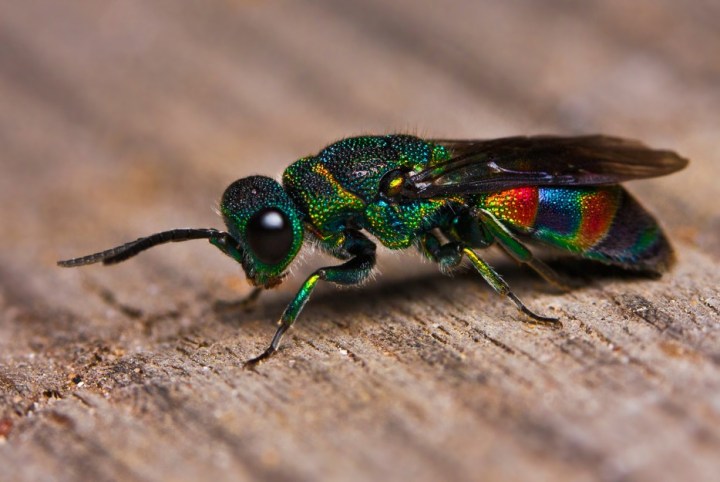 Cuckoo Wasp: The food-stealing behavior of some of the 3000 different species of cuckoo wasps is similar to the cuckoo bird. This is how the cuckoo wasp got its name.
Cuckoo Wasp: The food-stealing behavior of some of the 3000 different species of cuckoo wasps is similar to the cuckoo bird. This is how the cuckoo wasp got its name. -
22.
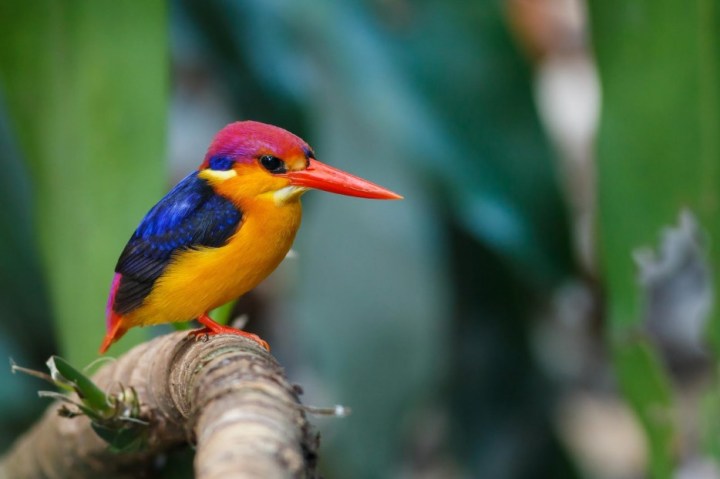 Oriental Dwarf Kingfisher: This small predator hunts by perching over the water and diving in after its prey at speeds of 25 mph.
Oriental Dwarf Kingfisher: This small predator hunts by perching over the water and diving in after its prey at speeds of 25 mph. -
23.
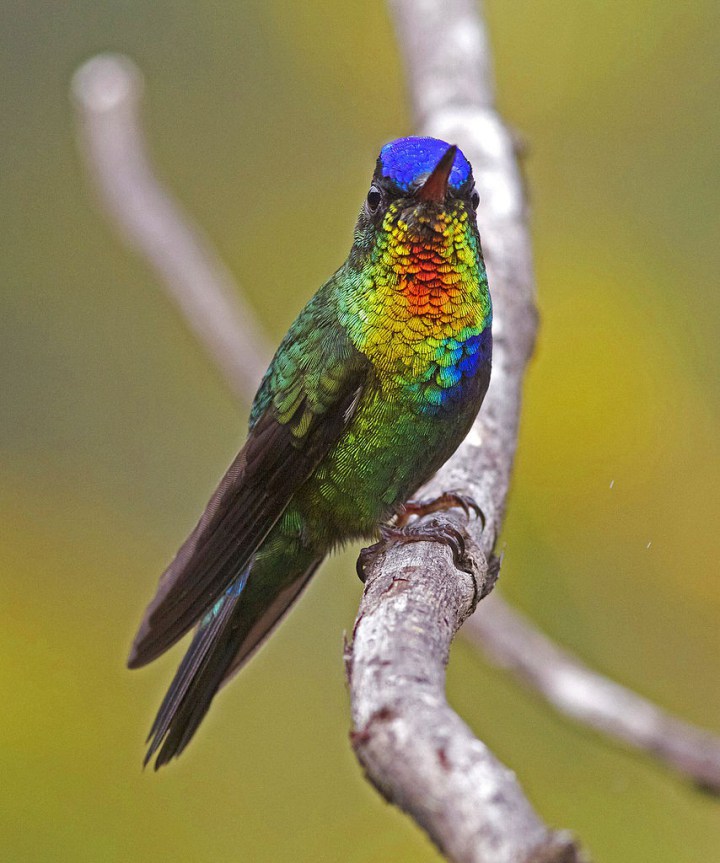 Fiery-Throated Hummingbird: These hummingbirds are only found in the cloud forests of Costa Rica and Panama above elevations of 4600 feet.
Fiery-Throated Hummingbird: These hummingbirds are only found in the cloud forests of Costa Rica and Panama above elevations of 4600 feet. -
24.
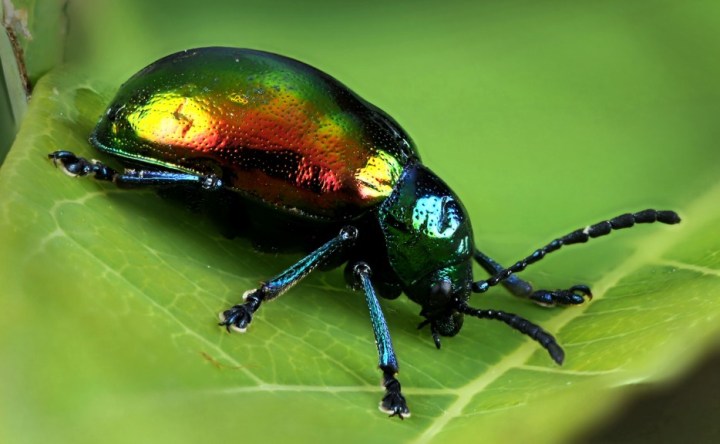 Dogbane Leaf Beetle: The beetle is named after the Dogbane plant that it eats and lays its eggs on. However, the larvae feed off the roots and this ends up killing the plant.
Dogbane Leaf Beetle: The beetle is named after the Dogbane plant that it eats and lays its eggs on. However, the larvae feed off the roots and this ends up killing the plant. -
25.
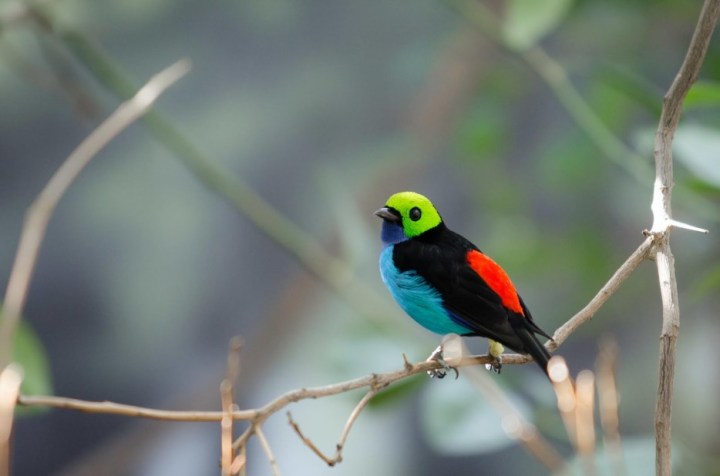 Paradise Tanager: This colorful bird is found throughout the Amazon basin in South America and is known locally by the nickname seven-color.
Paradise Tanager: This colorful bird is found throughout the Amazon basin in South America and is known locally by the nickname seven-color. -
26.
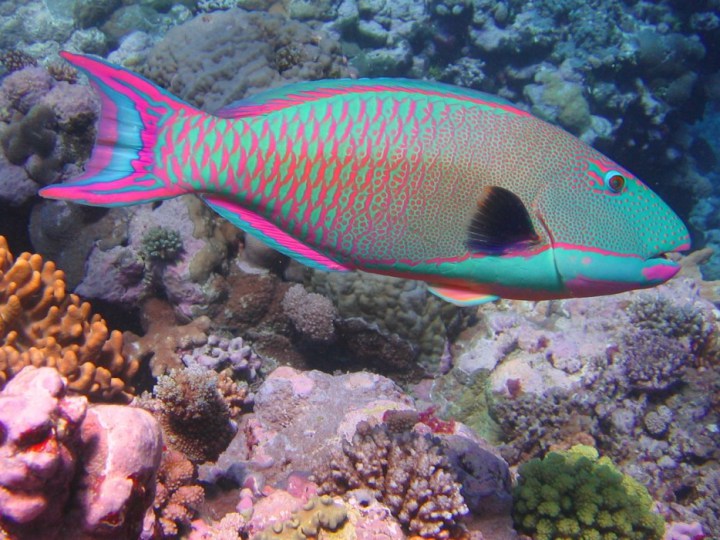 Parrotfish: Parrotfish eat algae from coral reefs and poop out the bits of coral they can't digest as sand. In fact, they are responsible for about 70 of all the tropical beach sand.
Parrotfish: Parrotfish eat algae from coral reefs and poop out the bits of coral they can't digest as sand. In fact, they are responsible for about 70 of all the tropical beach sand. -
27.
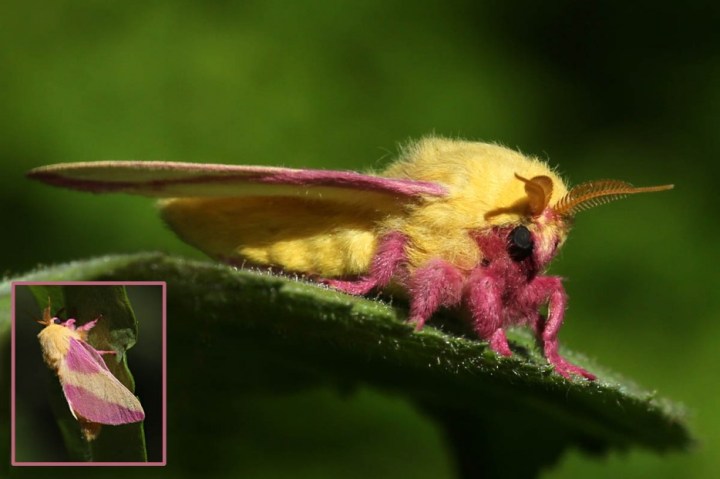 Rosy Maple Moth: They feed on maple trees and are a very common moth in the southern United States.
Rosy Maple Moth: They feed on maple trees and are a very common moth in the southern United States. -
28.
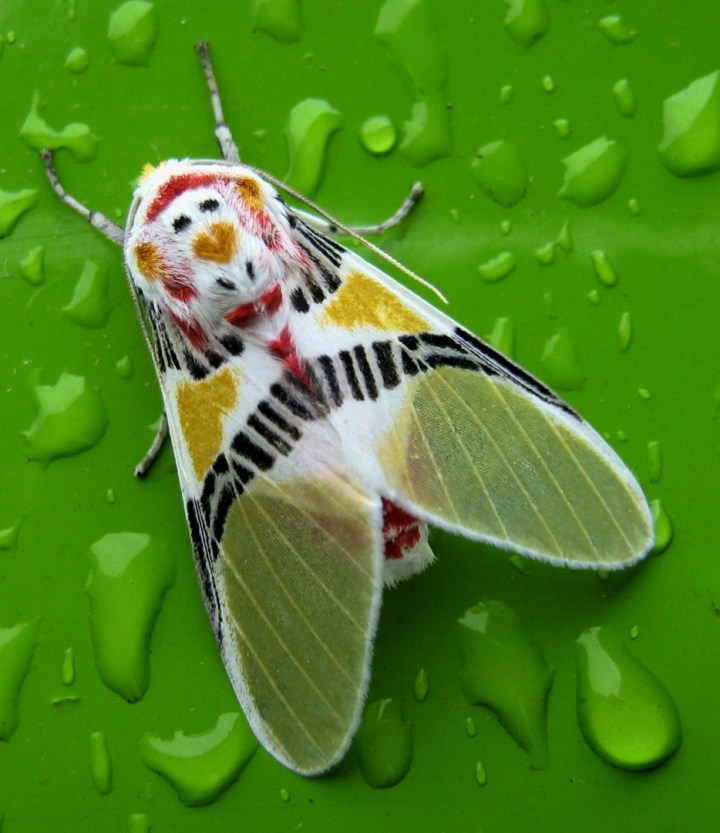 Idalus Herois: The Idalus herois is a moth in the Arctiidae family found in Central America.
Idalus Herois: The Idalus herois is a moth in the Arctiidae family found in Central America.
- NEXT GALLERY
-

- 30 Ingenious Things You Never Knew You Wanted
Chameleon: Not all chameleons can change color, and most of the ones that can dont use it for camouflage.
28/28
1/28


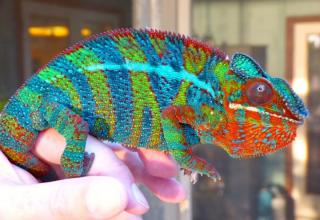
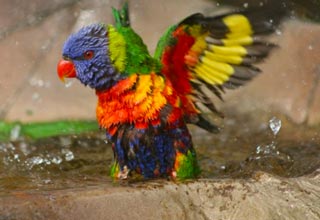




79 Comments